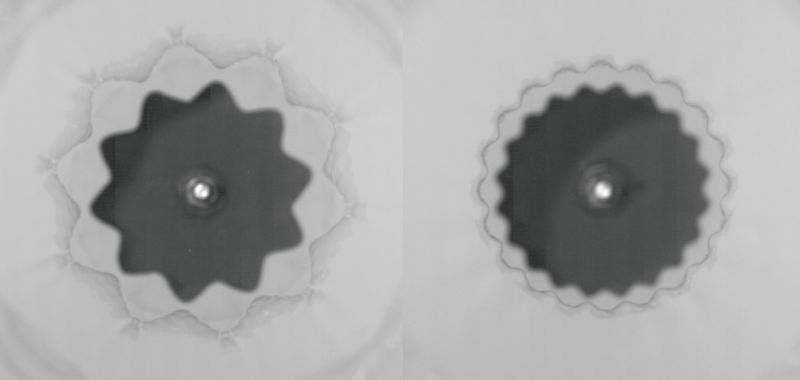Non-axisymmetric collapse
In most cases of research in this field axisymmetric conditions are assumed. A pressing question is what happens when this axisymmetric condition is violated. We start by applying a harmonic disturbance on the disk. We observe that the disturbances are preserved even if they are very small (1% of the mean radius). For these small disturbances we compare our experimental results with a linear theory formulated by Schmidt et al. Nature Phys. (2009). Larger disturbances become non-linear in an early stage, showing a wealth of complex phenomena like sharp cusp formation, secondary collapses of subcavities and sheet-like jets.

Figure 1: Top view of the impact of a harmonically disturbed disk (disk is colored black). During collapse the disturbances are preserved and the cavity shape inverts its phase.
See the links below for details about other subtopics.
Info: Devaraj van der Meer
